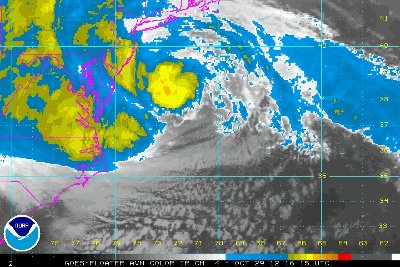As New York and New Jersey continue to recover from the damage Hurricane Sandy wreaked in October, now, about three months later, is a good time to reflect on what can be learned from Sandy. The area's data center industry, especially data centers in Manhattan, came out of the disaster quite bruised, as many mission-critical facilities went down.
We asked Ron Shindel, who runs security for L&L Holding Company (owner and manager about 5m sq ft of some of Manhattan's most prestigious real estate), to share his thoughts on the subject. Shindel has a long history in Manhattan and the institutions that shape it, including security and business continuity at the American Stock Exchange, security at LeFrak Organization (another major Manhattan landlord) and multiple roles within the New York Police Department.
Islands do get flooded
The biggest mistake by Manhattan developers Sandy exposed was ignoring the floodplain maps, Shindel says. Manhattan is an island, but it has not been built like an island. As is well known, Sandy caused massive flooding in lower Manhattan, water rising far above basement levels. “I think they felt that Manhattan Island was far enough in the harbor where you didn't have to worry about flooding,” he says.
The second-biggest mistake, in his opinion, was letting cost and profit be the number-one consideration when designing infrastructure within the buildings. “It was always easy to put your critical infrastructure in non-rentable space, like the basement, and keep your rentable space available for business and for tenants,” Shindel says. Many buildings had critical continuity infrastructure in basements, including fuel tanks and fuel pumps for backup generators. Once these basements were flooded, even buildings that had generators above ground floors could not start them.
The most colorful illustration of this scenario was 75 Broad St., whose generator was on the 17th floor, but its fuel pumps were in the basement. Once Sandy arrived to Manhattan, Con Edison switched utility power off, and one of the building's data center tenants, Peer 1, had to round up its employees to carry diesel fuel in buckets by stairs all the way to the 17th floor to keep the generator and its data center running. The so-called “bucket brigades” operated in shifts for several days.
Manhattan has some of the most expensive real estate in the world, which makes it easy to decide to stick electrical switches, boilers and telecom gear in the basements. “It's the easiest way to do it, and that's the way they went,” Shindel says. A lot of the buildings are pre-war and earlier. Some are over a hundred years old. When they were originally designed, their electrical and telecommunications needs where not nearly as big as they are today. They stuck the supporting infrastructure in basements because they did not rely as much on it. Today, that infrastructure is business-critical, but still located in vulnerable parts of the buildings.
The big lesson Shindel says building operators have to take away after Sandy is that sticking critical infrastructure in basements is not really a good option. They need to get all that equipment out from below the ground level and raise it to higher floors. Anybody doing new construction or major renovation in Manhattan needs to take this into consideration, he says.
Hear Ron Shindel speak at next week's DatacenterDynamics Converged conference in New York City
Another thing to consider carefully are all the underground garages on the island. Water destroyed thousands of vehicles parked under the buildings. “There was a huge amount of loss in those garages,” Shindel says.
Foresee the unforeseeable
Impact from the floods was not the only thing that forced many business in Manhattan to grind to a halt. Many buildings that did not get flooded or sustain damage to their backup infrastructure simply could not get diesel fuel once their on-site reserves ran out. Generator fuel became a scarce commodity in the region, and unless you had some robust fuel-delivery agreements in place, it was nearly impossible to get fuel delivered to your building when you needed it. This did not happen with any L&L properties, Shindel says, but it did with others. Employees of zColo, for example, which has a data center at 60 Hudson, had to stand outside of the buildings, flag down fuel trucks making deliveries elsewhere and beg the drivers to bring some fuel for the building's backup generators, Nat Tafuri, zColo's VP and head of engineering and operations, told us in an earlier interview.
Many other things that may not have been anticipated in companies' business-continuity plans happened. Be it street closures because of a crane knocked over by the hurricane, lack of public transportation, traffic lights going dark, it was hard to continue doing business on the island after Sandy. But none of this is going to have any effect on demand for real estate in Manhattan, Shindel says. “Manhattan is always Manhattan, and it always be,” he says. “It's always going to be the center of the Earth when it comes to real estate.”

